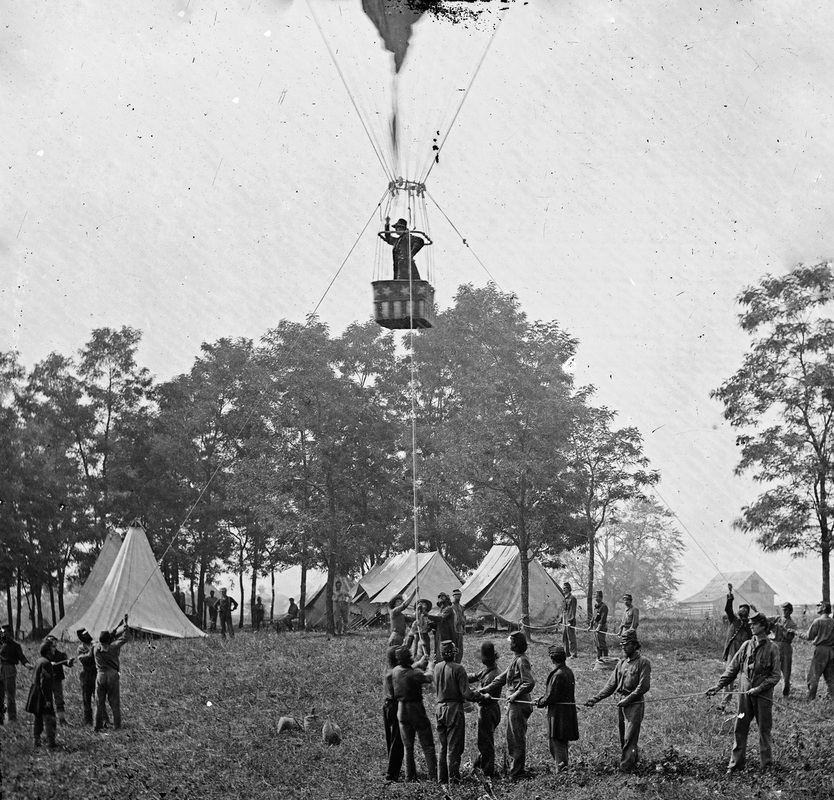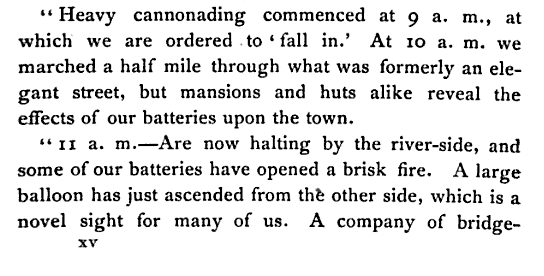As part of the notes I gave my 8th graders, while we were studying the Civil War, I covered some of the technological advances during the war, including the introduction of rifles, iron-clad battle ships and the Gatling gun. Because we are a New Hampshire school, I included the use of hot-air balloons by the Union Army. (Most of the notable balloonists of the period were from New Hampshire.) I pointed out that using balloons for observation led almost directly to the use of blimps and dirigibles half a century later in World War One, which led to the use of fighter planes and bombers, which led to modern air warfare.
This was all well and good - if a bit over-simplified - but probably didn't make much of an impression on most of my students.
Until we ran across this account of the Battle of Fredericksburg while investigating our Mystery Soldier of the 9th New Hampshire Volunteers:


 RSS Feed
RSS Feed